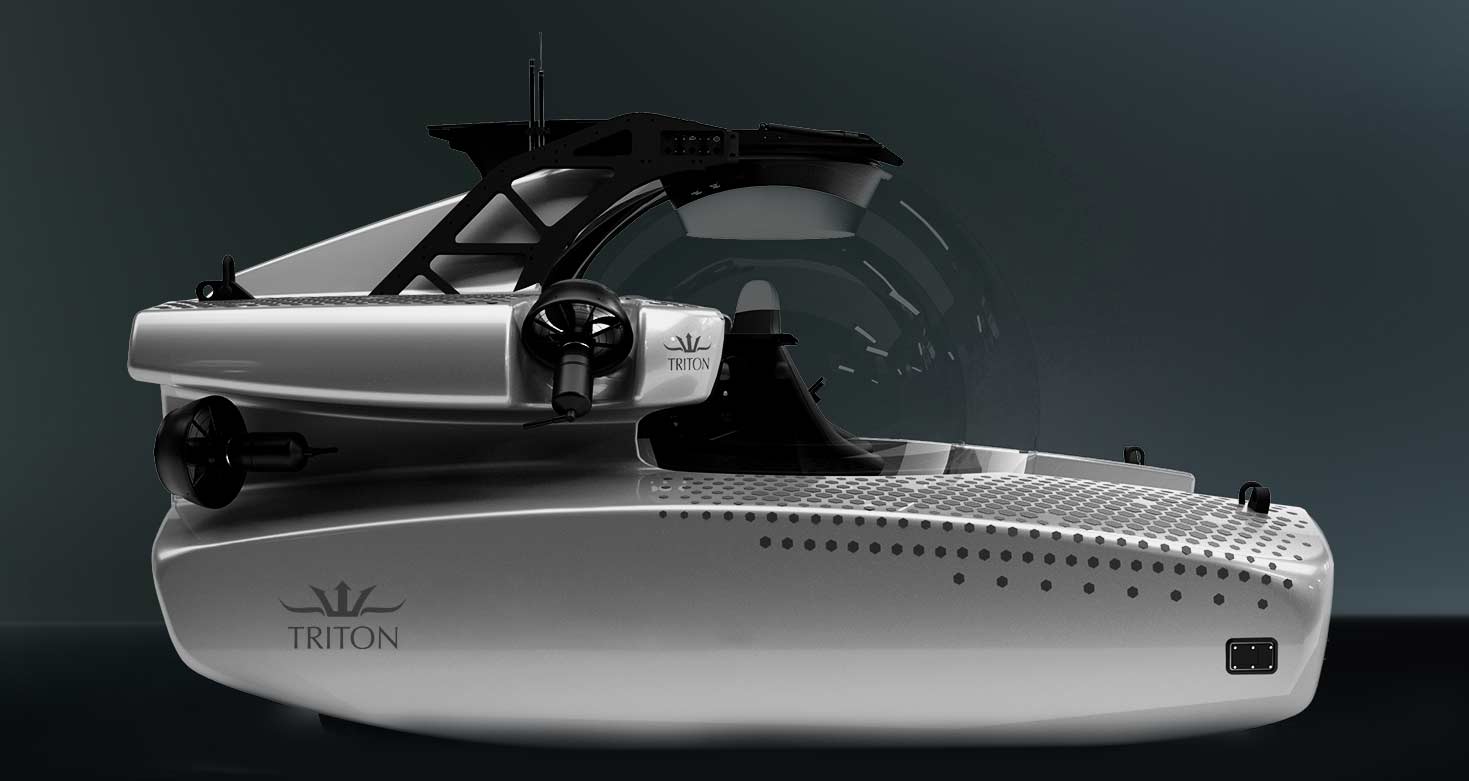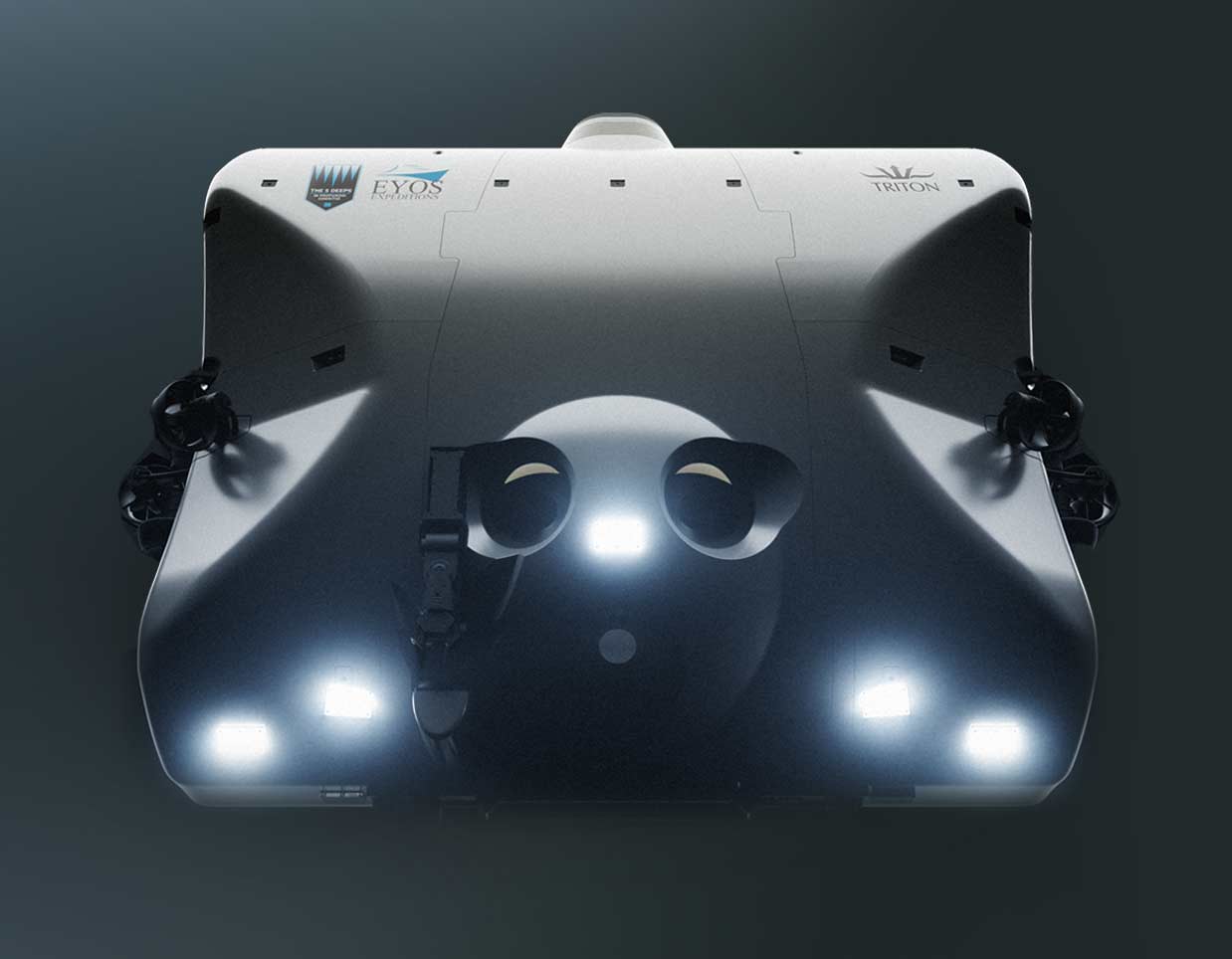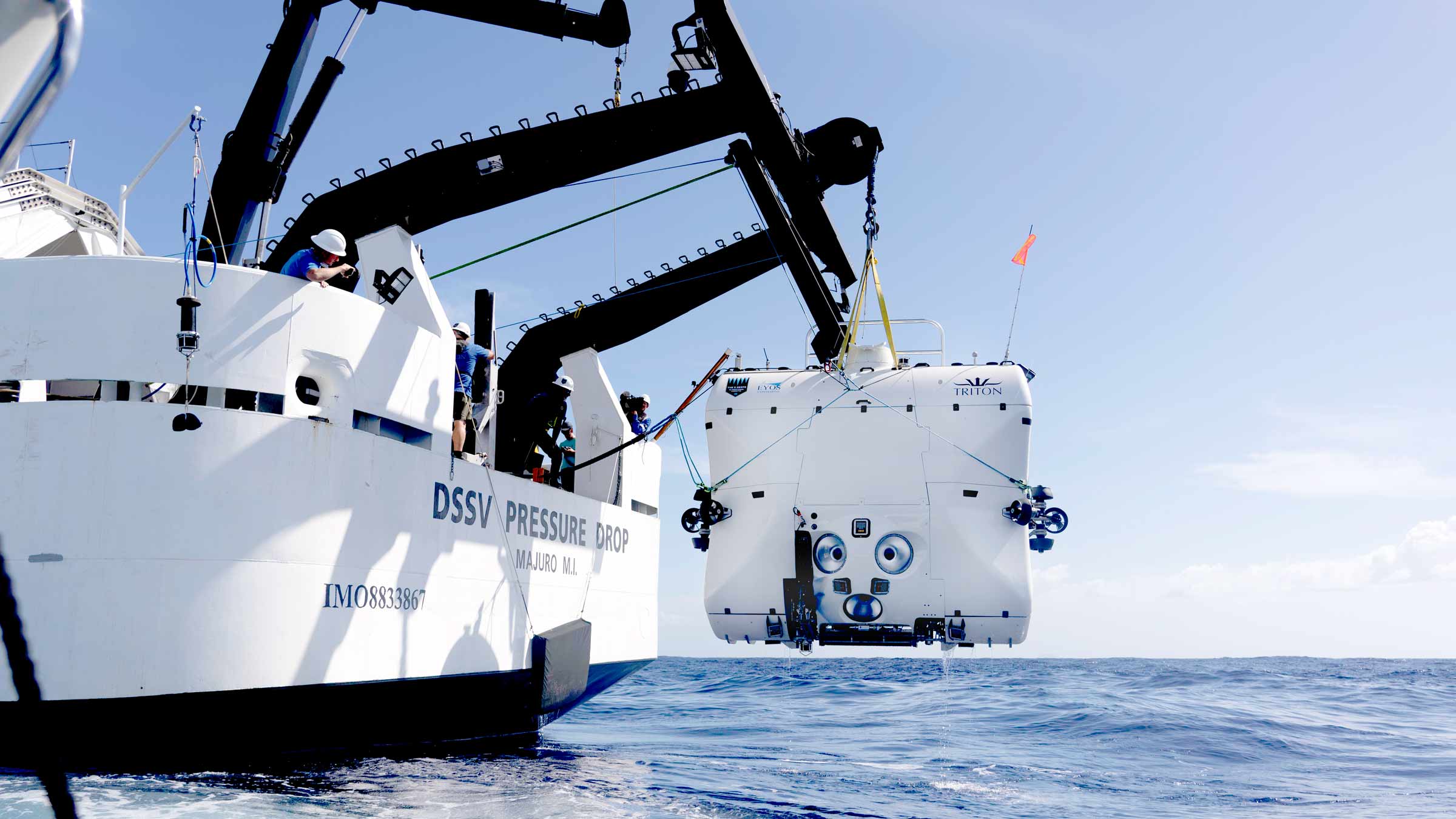- OUR SUBMERSIBLES
- |
- |
ULTRA-DEEP SUBMERSIBLES
Abyssal and Hadal-depth capable submersibles for the final frontier in human exploration
The TRITON 36,000/2 was described as “possibly the most impressive tool for human exploration and scientific endeavor since Apollo 11”.
In 2019, the owner of Triton’s, and the world’s, first fully-certified Full Ocean Depth capable submersible, became the first man to reach the deepest point in all five of the world’s oceans. His journey captivated the world and his discovery of plastic in the Mariana Trench highlighted to millions the effect of human activity on the health of even the most remote location on our planet.
The Abyss and Hadal zones of our oceans are the two least explored, least understood areas on our planet. Only Triton has the technical capability to create the tools scientists, researchers, adventurers and Governments need to further their understanding of this inherently hostile, uncharted world.
The submersibles in this section are capable of depths between 2,000 and 11,000 meters – full ocean depth. They exist to break down the final barrier of human exploration on Earth, and to further mankind’s understanding of the ocean.
RECOMMENDED MODELS
TRITON 36,000/2 FULL OCEAN DEPTH
11,000 m 2 11,700 kg 16+ hrs
Designed to glide vertically through the water column, the TRITON 36000/2 can reach the deepest point in the ocean in approximately three hours.
As the only submersible ever to be certified to unlimited depth, the TRITON 36000/2 has opened the doors for humanity to dive to any part of the world’s oceans. For the first time in history, it allows us to experience, with our own eyes, the wonders and the mysteries of the ultra-deep.

TRITON 7500/3
2,286 m 3 11,200 kg 10+ hrs
The TRITON 7500/3 is capable of diving to 1.4 miles deep and was designed to open up the world’s bathypelagic zones to human exploration.
Until the introduction of Triton GullWing in 2020, it was the world’s deepest diving acrylic-hulled submersible. Its large, comfortable interior accommodates three people. The classic superyacht-submersible configuration means it is as suited to high-end personal and Tourism customers as it is to scientists, researchers and explorers.
TRITON HADAL EXPLORATION SYSTEM
The TRITON HADAL EXPLORATION SYSTEM is a complete, ready-to-roll solution for exploration of the Hadal zones. The system comprises, among other things, a recently refitted, ultra-quiet ice-class deep submersible support vessel complete with accommodation for 46 passengers, wet- and dry- science labs, Kongsberg-Simrad EM-124 multi-beam sonar for seafloor mapping and pre-dive surveying, onboard media and mission communications & command suites, stern mounted launch and recovery system and purpose-built, retractable, climate-controlled submersible hangar, as well as a Full Ocean Depth Triton 36000/2 submersible and three Full Ocean Depth science and navigation landers.
Since its launch in late 2018 the system has proved its unmatched capability while circumnavigating the globe, mapping more than 1 million square km of deep ocean floor in the process, and conducting manned dives to the deepest points of each of the five oceans – including ten dives to Full Ocean Depth in the Challenger Deep in the Mariana Trench.
The TRITON HADAL EXPLORATION SYSTEM is available for purchase. Please enquire here.

WITH SPECIAL THANKS TO:

